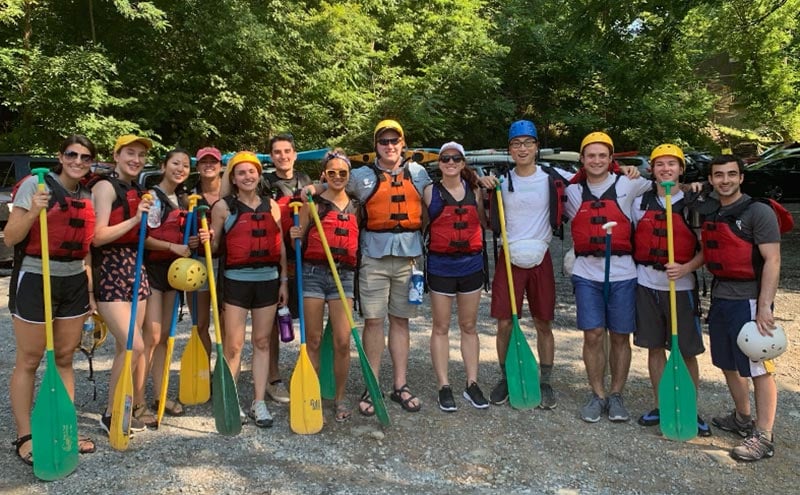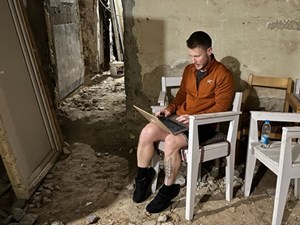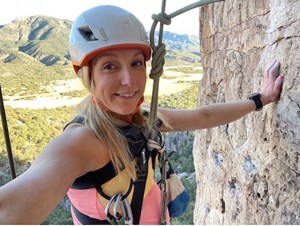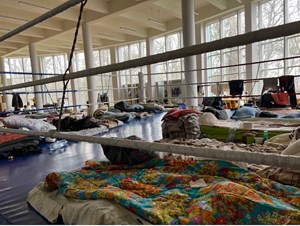
WMIG Whitewater Rafting and Water Disinfection Day Trip
The University of Maryland, Baltimore School of Medicine Wilderness Medicine Interest Group (WMIG) took 13 students on a whitewater rafting trip down the Shenandoah and Potomac rivers, where they were given the opportunity to connect with nature and learn about what it takes to survive self-sufficiently in the wilderness. The day’s activities included a guided rafting trip followed by a water disinfection workshop. Participants were educated on the principle that since we don’t carry around a reliable system of measuring water quality and safety while in the wilderness, it is good practice to assume all water one encounters is not inherently safe. Thus, it is paramount that anyone venturing into the backcountry understand how to disinfect water to minimize the risk of contracting a waterborne illness. Another fundamental principle of our water safety talk was that, just as there is no one ideal survival kit or medical kit, there is no one ideal way to disinfect water. The optimal technique depends on many factors, including the number of people in the group, amount of water, space and weight restrictions, location, etc. Often a two-step process is warranted.
With guidance from Dr. Eric Bowman of York, PA, the WMIG leaders taught participants how to safely disinfect and purify water using a variety of chemical and physical methods. These methods included heat, halogens, filters, ultraviolet light, and coagulation-flocculation. Heat, the oldest method of water disinfection, is a reliable but fuel- and heat source-dependent process. Once the water is brought to a boil, one can be confident that the water is disinfected. Using halogens, such as iodine, chlorine (household bleach), and chlorine dioxide, to disinfect water is the most common method worldwide with the advantages of being lightweight, compact, inexpensive, and simple to scale up to large amounts. A quicker and more palatable method is filtration. There are many water filters on the market that vary in space, weight, and cost making them applicable to a variety of situations. A point of caution emphasized with filters is that they do not filter viruses and thus are better suited for the United States where Hepatitis A is not a concern. Devices such as the SteriPEN use ultraviolet light to kill all microorganisms and are a great choice for clear water in small amounts available for drinking immediately. If the water source is quite cloudy, coagulation-flocculation, using salts such as aluminum, is a good method to remove the sediment and most organisms but does require a second step for disinfection.
After students were taught the benefits and drawbacks of each method, they were given the opportunity to taste test a variety of methods. The consensus was that the iodine and chlorine dioxide treated water did not have as bad of a taste as participants expected and that the filtered water had the best taste. We recommend adding flavoring powder after the contact time for any of the methods if the taste is bothersome. Although the optimal water disinfection technique is context-dependent, we will be using water filtration for our next wilderness adventure.
Kimberly Oslin, MD; Douglas Sward, MD



